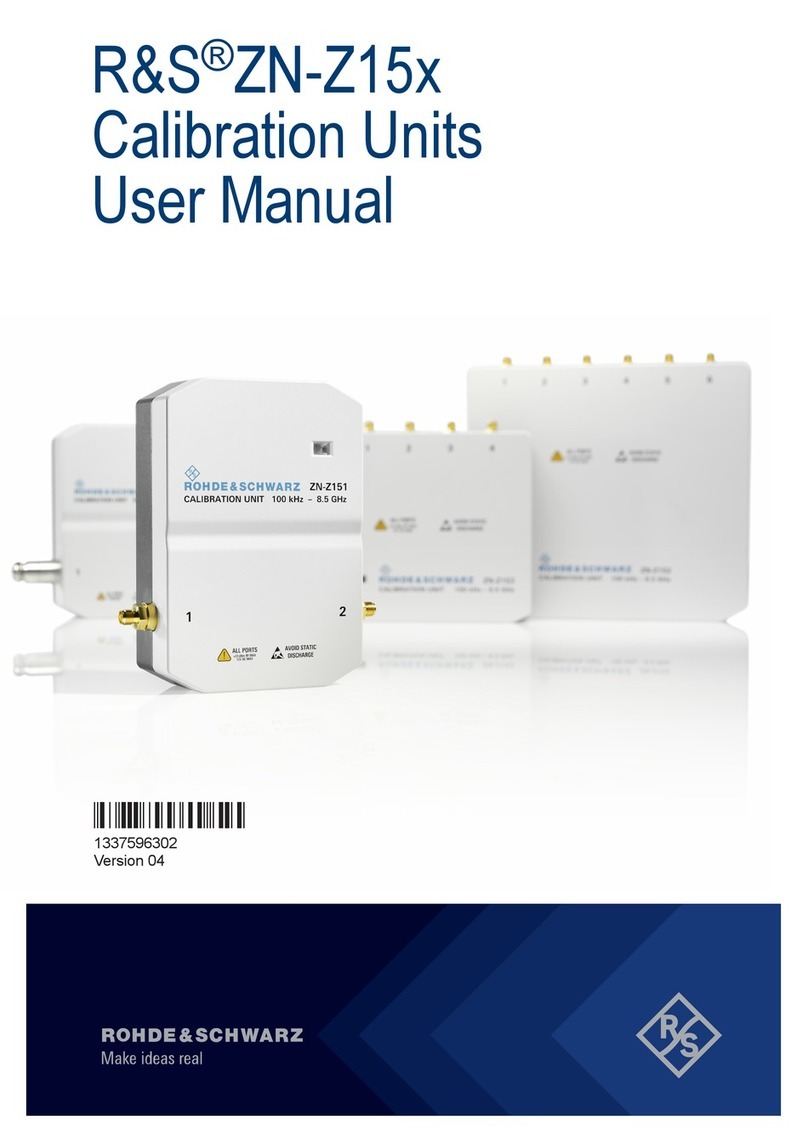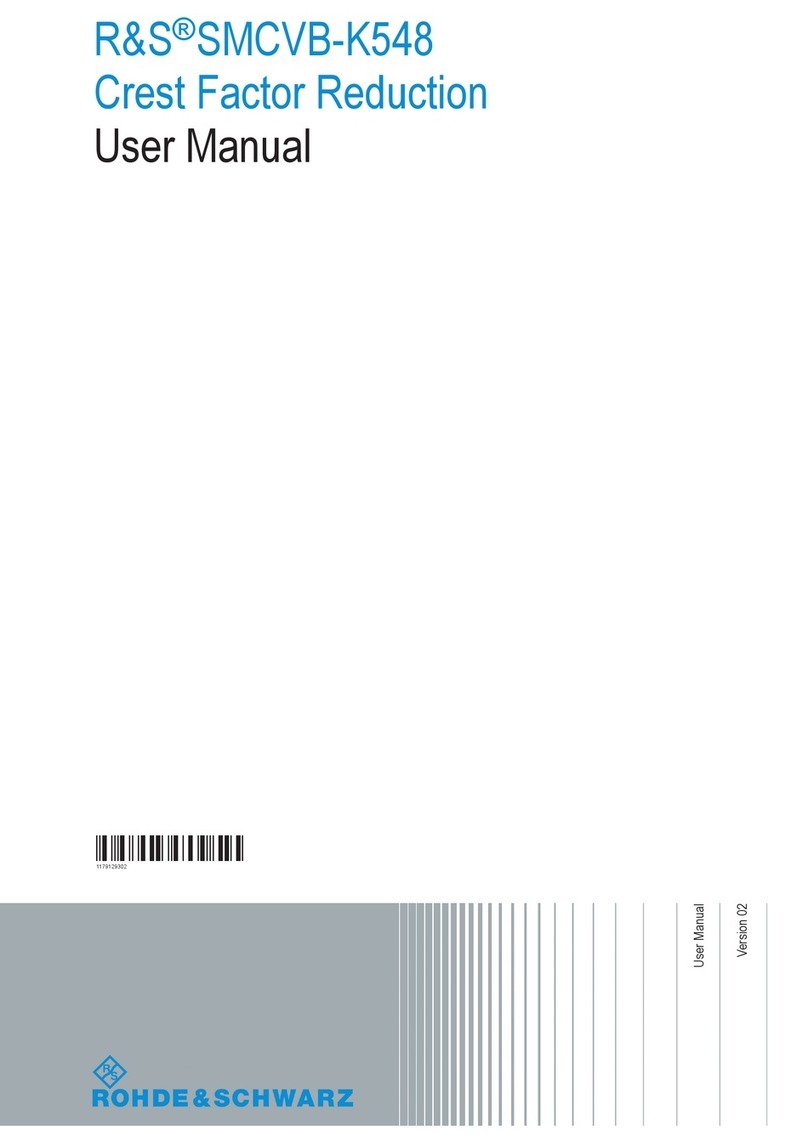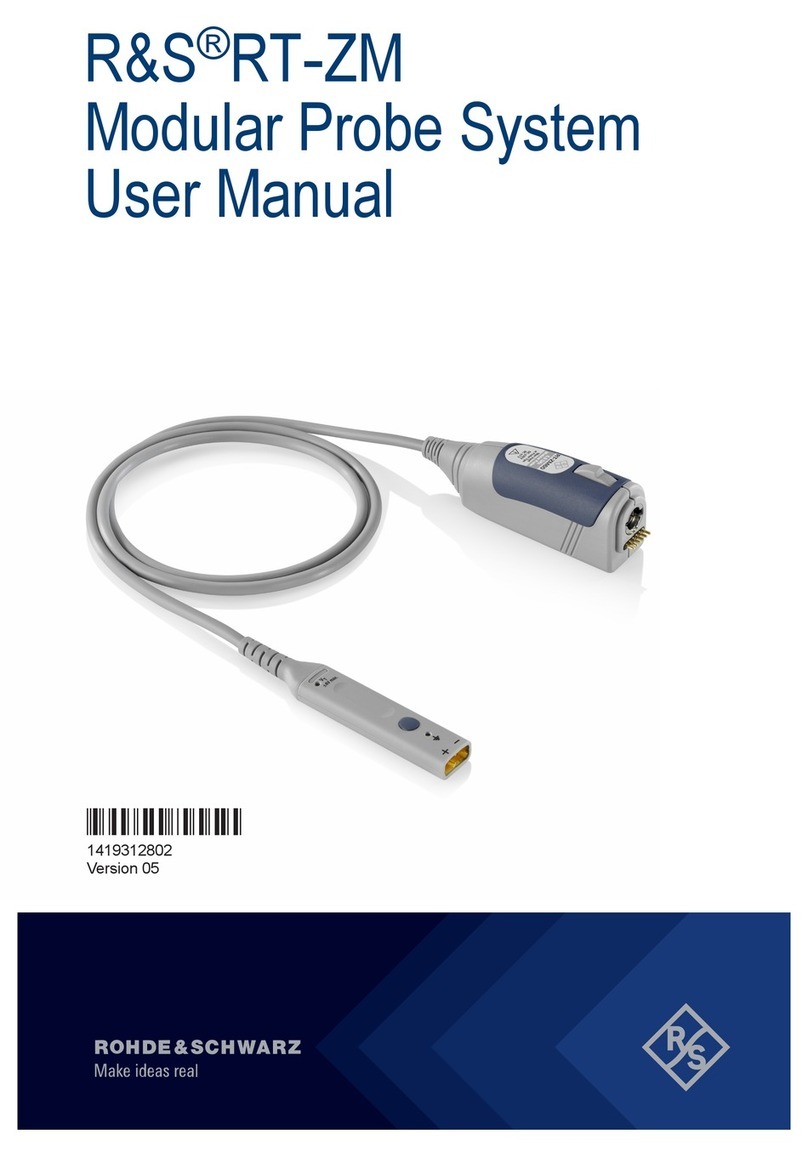
About the Crest Factor Reduction
R&S®SMBVB-K548
10User Manual 1179.0922.02 ─ 01
3 About the Crest Factor Reduction
Communication standards utilizing higher order modulation techniques or using multi-
ple carrier and complex signals consisting of the signals of more than one digital stan-
dard can feature a high crest factor. The signals of some digital standards can have
high crest factors also particularly with many channels and long sequences.
The crest factor represents the ratio of the peak voltage value to the RMS voltage
value, i.e. the peak to average ratio (PAR). The higher the crest factor and the resulting
dynamics of a signal, the greater the requirement for a power amplifier fed by the sig-
nal to be linear. A high crest factor arises for instance, when in a multi carrier signal the
carriers feature an identical start phase. This is based on the fact that the carriers are
periodically superposed that leads to high peak voltages in relation to the RMS voltage
values.
High crest factors entail two basic problems:
●The nonlinearity of the power amplifier (compression) causes intermodulation
which expands the spectrum (spectral regrowth).
●Since the level of the D/A converter is relative to the maximum value, the average
value is converted with a relatively low resolution. This leads to a high quantization
noise.
Both effects increase the adjacent-channel power.
Applying clipping and filtering
A common and simple approach for achieving a lower PAR is the combination of clip-
ping and filtering.
●Clipping is a technique that applies a wanted distortion to the signal.
The principle includes specifying a threshold, finding out the signal peaks once the
defined limits are exceeded and clipping them off. The level limit is specified as a
percentage of the highest peak value. Because clipping is done before filtering, the
procedure does not influence the spectrum. The error vector magnitude (EVM)
however increases.
However, signal clipping not only changes the peak value but also the average
value and the effect on the crest factor is unpredictable.
●After the clipping, filtering is applied. The used filters are specially designed so
that they filter out the distortion.






























